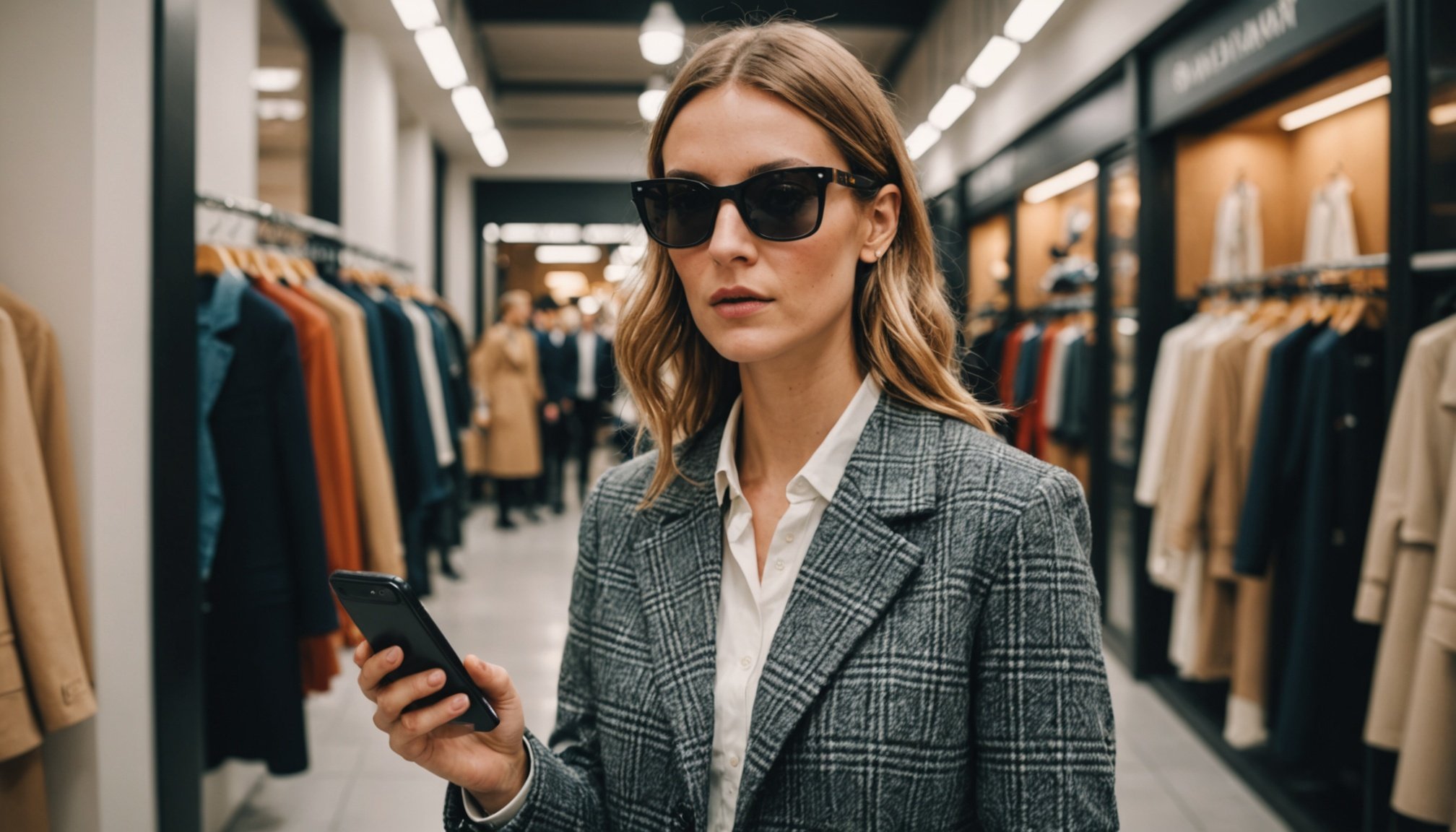Overview of Augmented Reality in E-Commerce
Augmented Reality (AR) has swiftly transformed the landscape of e-commerce, bridging the gap between physical and digital shopping experiences. Its evolution has been driven by the desire to enhance customer experience and engagement by allowing consumers to visualise products in real-world scenarios before purchasing. This transformative technology has found significant footing particularly in fashion, offering a promising glimpse into the future of shopping.
The capacity of AR to create immersive and interactive environments has catalysed a shift in consumer expectations and e-commerce trends, pushing retailers to reimagine how they showcase their products. Global trends underscore a widespread adoption of AR, notably in fashion, where brands leverage it to offer unique shopping experiences that captivate and retain consumers. AR’s role in enhancing customer engagement is pivotal, often resulting in increased time spent on apps and websites, and ultimately boosting conversion rates.
Have you seen this : Enhancing workforce wellness and efficiency: creative approaches for uk enterprises
In this burgeoning landscape of e-commerce trends, AR stands out as a key player not just in attracting attention but also in building deeper connections with consumers. As fashion brands continue to innovate, the integration of AR is becoming an indispensable part of their strategy to stay relevant and competitive in the fast-evolving digital marketplace.
UK Fashion Brands Leveraging Augmented Reality
In the realm of fashion, UK brands are rapidly embracing Augmented Reality (AR), showcasing remarkable creativity. Let’s delve into some noteworthy cases.
Case Study: Brand A
Brand A has pioneered in the adoption of AR by integrating virtual fitting rooms in their mobile app. This feature allows customers to visualise clothing on their own avatars, significantly enhancing the shopping experience. It not only empowers the consumer with accurate fit insights but has also led to a tangible reduction in return rates.
Case Study: Brand B
Brand B’s innovative use of AR focuses on interactive advertisements. These ads, when scanned with a smartphone, bring products to life, thus capturing customer attention dramatically. The result? A notable increase in both engagement metrics and conversion rates. This tactic has effectively differentiated Brand B in a saturated market.
Case Study: Brand C
Brand C takes AR a step further by blending it with sustainability efforts. By allowing users to virtually mix and match clothing pieces before purchasing, Brand C promotes mindful shopping. Such integration doesn’t merely bolster sales; it cements their reputation as an environmentally conscious brand.
These case studies exemplify how AR applications are not only transforming purchase experiences but also setting UK fashion brands apart in the competitive landscape.
User Experience with Augmented Reality
In the realm of user engagement and customer experience, augmented reality (AR) proves to be a game-changer for fashion apps. Enhanced user-friendly AR features are critical, allowing consumers to navigate virtual fitting rooms with ease, which directly influences purchase decisions. These features empower users to visualise products realistically, significantly lowering the dissonance often experienced post-purchase.
AR tailors bespoke experiences, elevating consumer satisfaction. Feedback often highlights delight in the interactive nature, citing ease in selecting styles that complement existing wardrobes. Shoppers appreciate the transparency AR provides, fostering confidence that mitigates purchase hesitation and consequently reduces return rates.
Among notable examples is the way AR enhances decision-making. Imagine assessing a potential outfit; AR enables users to see it on their digitised avatars, providing instant feedback and boosting decision confidence. It’s a paradigm shift where customers no longer purchase blindly but have a virtual try-before-you-buy experience.
Statistical insights reveal impressive results, with reduced return rates and increased cart completions being prominent. Consumers trust the visually accurate portrayals AR offers, aligning expectations with reality and crafting seamless shopping journeys. This transformative approach stands to revolutionise the fashion landscape, ushering in a new era of customer engagement.
Visual Impact and Effectiveness of AR in Fashion
In the fashion industry, augmented reality (AR) has become a cornerstone of visual marketing, creating an unprecedented sales impact. With immersive AR features, retailers are capturing consumer attention and influencing buying behaviour, as statistics on AR in retail illustrate robust growth in engagement and conversion rates. For instance, interactive AR displays often lead to heightened consumer interest, driving sales and reducing bounce rates.
Examining consumer behaviour studies, it’s evident that AR not only attracts initial interest but also nurtures sustained engagement. Users report greater satisfaction with brands that offer visually rich AR experiences, enhancing confidence in purchase decisions. This positive interaction often translates to loyalty and repeat purchases, as customers appreciate the innovation and utility AR provides.
Visual examples of effective AR strategies showcase its ability to seamlessly integrate virtual products into a consumer’s real-world environment. For instance, try-before-you-buy features allow customers to see products on themselves or in their spaces, offering a realistic and personalised experience that is hard to resist. These strategies demonstrate how AR is not merely an addition but an essential tool in modern fashion campaigns, pushing the boundaries of traditional retail approaches. This visual impact fosters brand differentiation and competitive advantage in an evolving marketplace.
Future Trends of AR in E-Commerce
The integration of augmented reality (AR) in retail is continuously evolving, promising notable future innovations. One pivotal trend is the advancement of AR technologies to provide even more personalised shopping experiences. As the fashion sector embraces digital transformation, AR’s role in tailoring experiences tailored to individual preferences is anticipated to grow significantly.
A challenge for AR in e-commerce is ensuring seamless integration while maintaining user-friendly interfaces. Innovations focusing on enhancing these interfaces will likely streamline AR adoption in retail, making it more accessible to a broader audience. Solutions such as more intuitive AR design and improved compatibility with mobile devices could address these hurdles effectively.
AR’s impact on e-commerce extends beyond just offering innovative experiences; it enables brands to form deeper connections with consumers. By anticipating trends and adapting AR features to align with customer expectations, fashion brands can stay ahead of e-commerce trends. As AR technology advances, the potential for richer, more interactive shopping environments grows, fostering a marketplace characterised by enhanced engagement and convenience.
The future of AR in the fashion industry looks robust. It’s a dynamic field that, with its innovations and solutions, is set to revolutionise e-commerce, redefining how consumers interact with brands.











